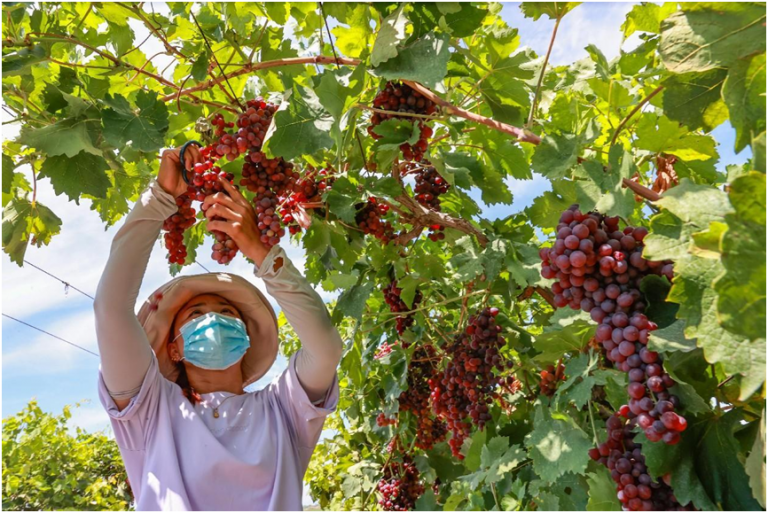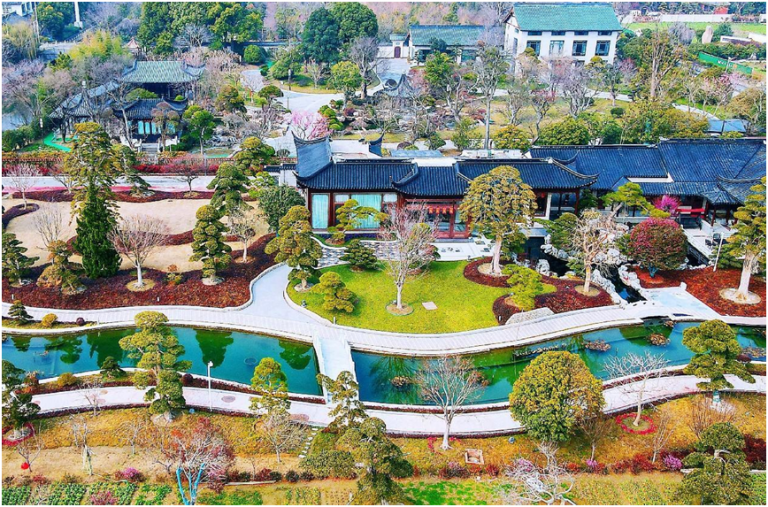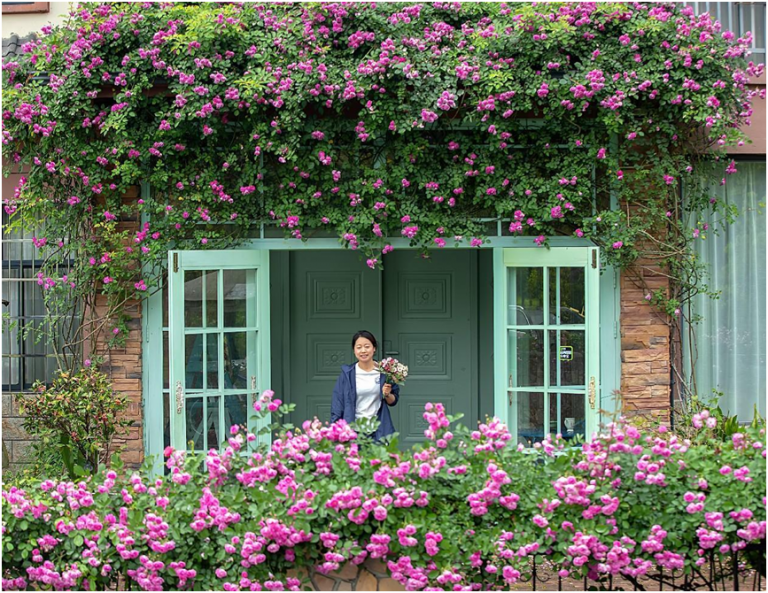
By Li Jie
Ruz, a resident in Shufu county, northwest China’s Xinjiang Uygur autonomous region, has his “masterpiece” — a vibrant courtyard where fruit scents arise all year round.
He always invites his neighbors to visit his courtyard.
Ruz’s courtyard, which hides behind a gigantic tree, is small but is neatly packed with plant pots and a mini parterre grown with flowers, medicinal herbs and green vegetables. In the backyard, there are grape trellises, apricot trees and peach trees, as well as a sheepfold and a cowshed.
“This small courtyard supplies my family with fruits and vegetables. I also earn some extra income through the beef and mutton business. The medicinal herbs are said to have a high economic return as well,” said Ruz, who does farm work during the agricultural season and often manages the courtyard when he’s not busy farming.
Small courtyards play an important role in China’s economic development. When idle land resources are revitalized, “micro economic units” engaged in various sectors speed up China’s rural vitalization.
Courtyard economy was included in China’s “No. 1 central document” for the first time this year. The document encourages all farmers in regions that have shaken off poverty to develop a courtyard economy if conditions allow.
Generally speaking, courtyard economy is a business form in which rural families carry out small-scale agricultural production at home or in surrounding areas for self-sufficiency or commercial profits. It is a part of the agricultural economy.

According to statistics from the Ministry of Human Resources and Social Security, 32.78 million people across China who had previously been impoverished were employed last year, an increase of 1.33 million people year-on-year. For those who have no opportunities to secure a job, courtyard economy remains a good choice.
He Anhua, a researcher of the Research Center for Rural Economy under the Ministry of Agriculture and Rural Affairs (MARA), believes that courtyard economy is beneficial for multiple parties.
He explained that it not only helps activate idle resources and gains extra income for rural families but also beautifies the countryside and rural residents’ living environment. In addition, developing featured industries under courtyard economy will help counties foster new growth drivers and reinforce the national foundation in food security.
There are many examples of “a hole in the wall” turning into a “gravy train” across China.
In northwest China’s Ningxia Hui autonomous region, villagers grow non-timber trees around their courtyards as decoration and an extra source of income.
In Delingha, northwest China’s Qinghai province, farmers are developing featured breeding in their courtyards.
In Huayuan county, central China’s Hunan province, B&B hotels, agritainment facilities and cultural activities are boosting local tourism.
According to relevant policies that have drawn a blueprint for the future development of courtyard economy, featured crop farming and breeding will remain a focus of courtyard economy, such as “micro” tea gardens, vegetable farms, orchards and fungi gardens, which satisfy the consumption demand of cities.
Featured handicraft businesses will be developed, including intangible cultural relics workshop, home-based factories and manual workshops.
Leisure tourism is also a direction in which courtyard economy will be developed. More featured B&B hotels, agritainment facilities and fruit picking farms will be built.
Besides, a batch of e-commerce sales centers, livestream commerce centers and express delivery centers will be built in rural areas so as to expand the income of rural households.

In short, the key to developing courtyard economy is to find a differentiated path that incorporates rural features.
The most important thing about developing courtyard economy is to promote self-reliance and diligence, and to encourage residents that have shaken off poverty to learn a skill and create a better future with it, he said.
By 2025, the courtyard economy will be developed on a larger scale, with more business forms, more vitality and a higher level of development, according to a guideline on encouraging rural areas that have been lifted out of poverty to develop courtyard economy.










